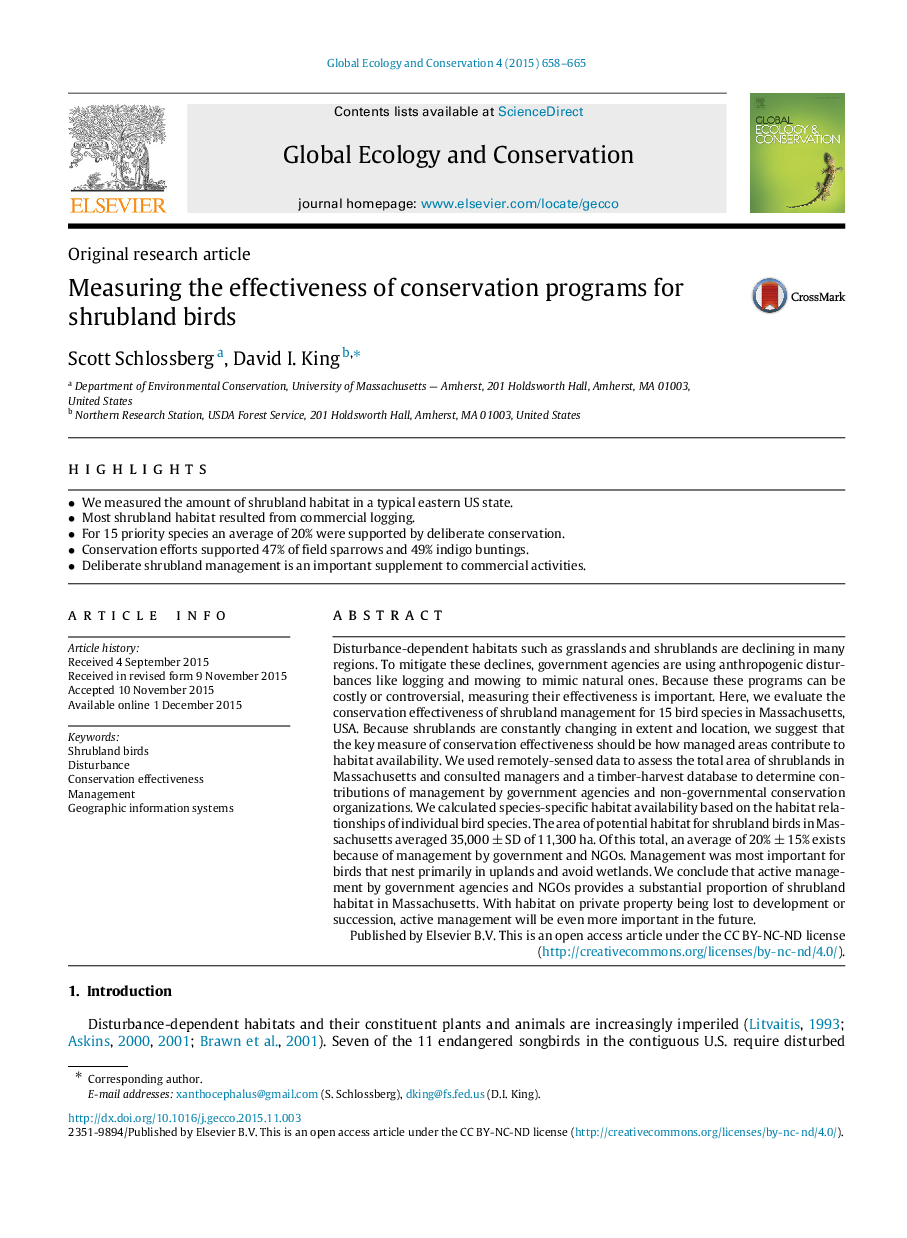| کد مقاله | کد نشریه | سال انتشار | مقاله انگلیسی | نسخه تمام متن |
|---|---|---|---|---|
| 4379536 | 1617663 | 2015 | 8 صفحه PDF | دانلود رایگان |
• We measured the amount of shrubland habitat in a typical eastern US state.
• Most shrubland habitat resulted from commercial logging.
• For 15 priority species an average of 20% were supported by deliberate conservation.
• Conservation efforts supported 47% of field sparrows and 49% indigo buntings.
• Deliberate shrubland management is an important supplement to commercial activities.
Disturbance-dependent habitats such as grasslands and shrublands are declining in many regions. To mitigate these declines, government agencies are using anthropogenic disturbances like logging and mowing to mimic natural ones. Because these programs can be costly or controversial, measuring their effectiveness is important. Here, we evaluate the conservation effectiveness of shrubland management for 15 bird species in Massachusetts, USA. Because shrublands are constantly changing in extent and location, we suggest that the key measure of conservation effectiveness should be how managed areas contribute to habitat availability. We used remotely-sensed data to assess the total area of shrublands in Massachusetts and consulted managers and a timber-harvest database to determine contributions of management by government agencies and non-governmental conservation organizations. We calculated species-specific habitat availability based on the habitat relationships of individual bird species. The area of potential habitat for shrubland birds in Massachusetts averaged 35,000 ± SD of 11,300 ha. Of this total, an average of 20% ± 15% exists because of management by government and NGOs. Management was most important for birds that nest primarily in uplands and avoid wetlands. We conclude that active management by government agencies and NGOs provides a substantial proportion of shrubland habitat in Massachusetts. With habitat on private property being lost to development or succession, active management will be even more important in the future.
Journal: Global Ecology and Conservation - Volume 4, July 2015, Pages 658–665
